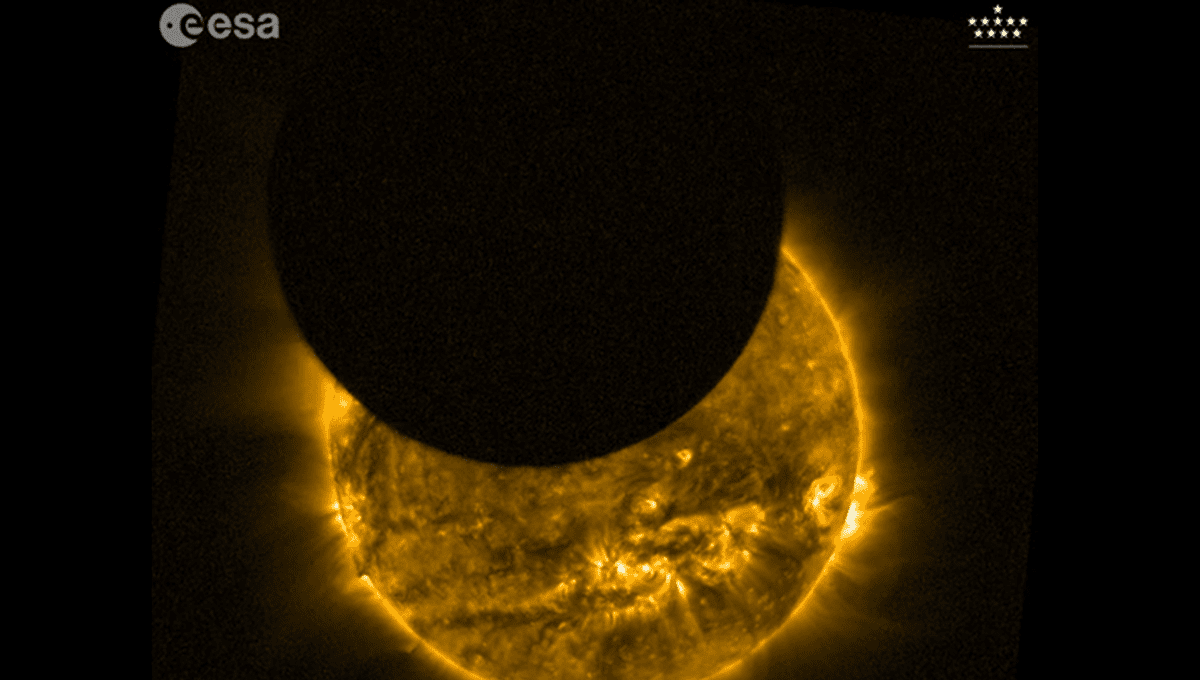
Many across Europe, North Africa, the Middle East, and West Asia saw a partial solar eclipse yesterday. The Moon covered a fair bit of the Sun as it orbited the Earth. The European Space Agency’s Proba-2 also saw the eclipse happening and, due to its orbit, saw it not once, but twice.
The mission looks at the sun in extreme ultraviolet light, allowing for visualization of the corona and the filaments that stretch out from the solar surface. This work provides precious information so that scientists can keep an eye on the Sun’s behavior and its influence on the space weather around Earth.
The first observation of the eclipse started around 10:30 UTC but, unfortunately, as the spacecraft started to see the Moon approaching, its SWAP instrument turned off. This is standard procedure when the spacecraft goes through the Earth’s atmosphere. The second time around was better, showing the full motion of the Moon across the Sun.
Maximum obscuration took place near the North Pole, where 82 percent of the Sun was blocked. Europe experienced at most 40 percent obscuration.
Source Link: This Is What Yesterday’s Partial Solar Eclipse Looked Like From Space